Pilgrimage Tour in Nepal
Nepal is a country where every religious follower has the freedom to live their spiritual life however they like. Along with Buddhists, Muslims, and Christians, Hindu worshippers make up the majority of the population in this country. All religious enthusiasts from all over the world have pilgrimage journeys in Nepal as a home base. On the other hand, if you simply want to see the pilgrimage site while thinking about your religion, you are welcome in Nepal.
Nepal has already been considered a well-known destination for Hindu and Buddhist pilgrims, and the world looks to Nepal as an example of religious tolerance because there, Muslims, Christians, and other minority religions coexist together. Nepal is the perfect place for your pilgrimage tour. There are several temples in Nepal. Hindu pilgrimage tours in Nepal include visits to the Pashupatinath Temple in Kathmandu, Manakamana Temple in Gorkha, Janaki Mandir in Janakpur, Muktinath Temple in Mustang, Halesi Mahadev in Khotang, Gosaikunda in Rasuwa, Pathibhara in Taplejung and many other places.
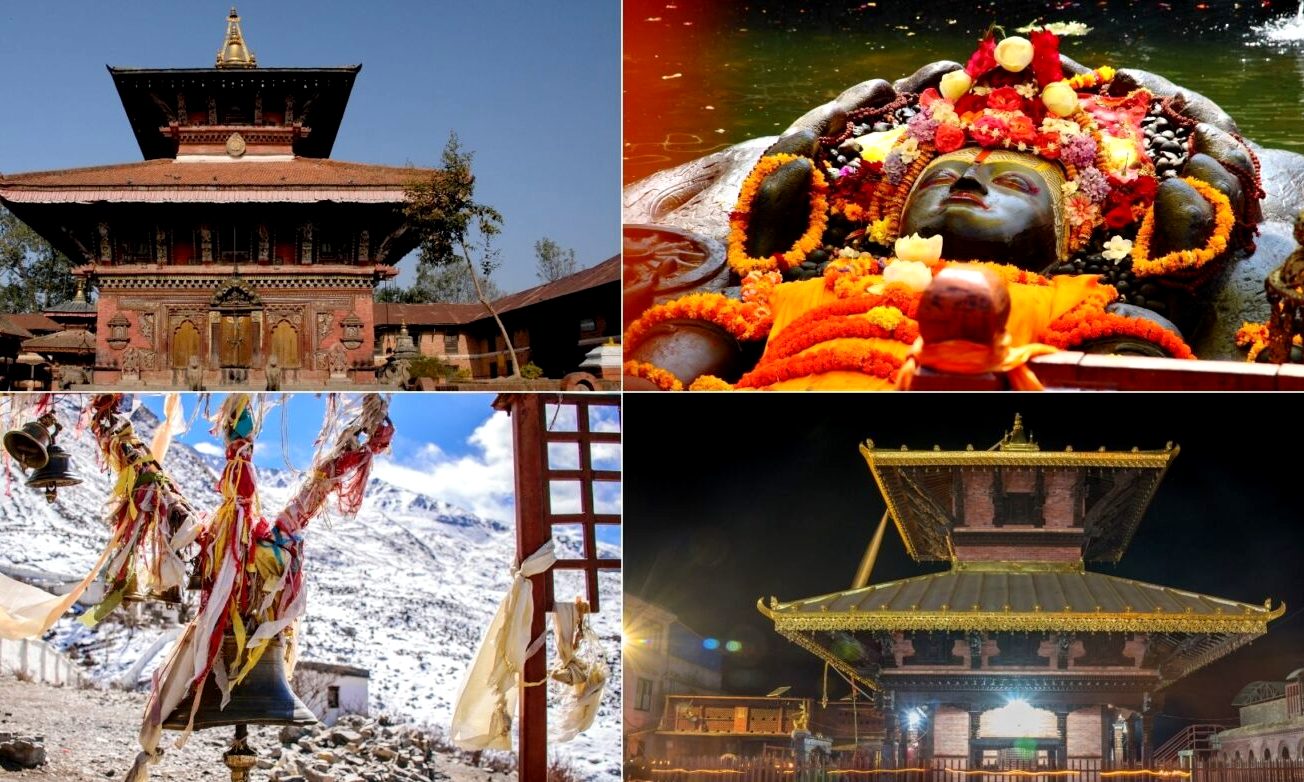
There are many Buddhist pilgrimage sites in Nepal, including Boudhanath Stupa, Swayambhunath Stupa, Namobuddha, Kapan Gompa in Kathmandu, Lumbini, and a few other well-known locations.
For Muslim pilgrimage tours in Nepal, Jame Masjid in Kathmandu, Pokhara, and a few other locations are well-known.
Here are some of the most visited pilgrimage tour destinations in different cities of Nepal:
Kathmandu
Kathmandu, the capital of the country, is very rich in various religious, historical, social, and monumental locations. It is one of Nepal's oldest and most revered urban regions. Hindus, Buddhists, Christians, and other historical and religious institutions can be found there. Basically, Kathmandu showcases the vibrant colors of different religions and their community.
Here is the list of the top religious places you must visit in Kathmandu:
Pashupatinath Temple
Pashupatinath Temple is one of the holiest Hindu temples in Nepal dedicated to Lord Shiva. It is also the largest Hindu sanctuary in Asia. There are several Shiva linga altars, four silver entryways, and celestial images throughout this two-layered, magnificent temple. It is located 6 kilometers to the east of Kathmandu on the holy Bagmati River. The sanctuary is off-limits to non-Hindus. It is generally acknowledged that this sanctuary was built before the Christian era even began.
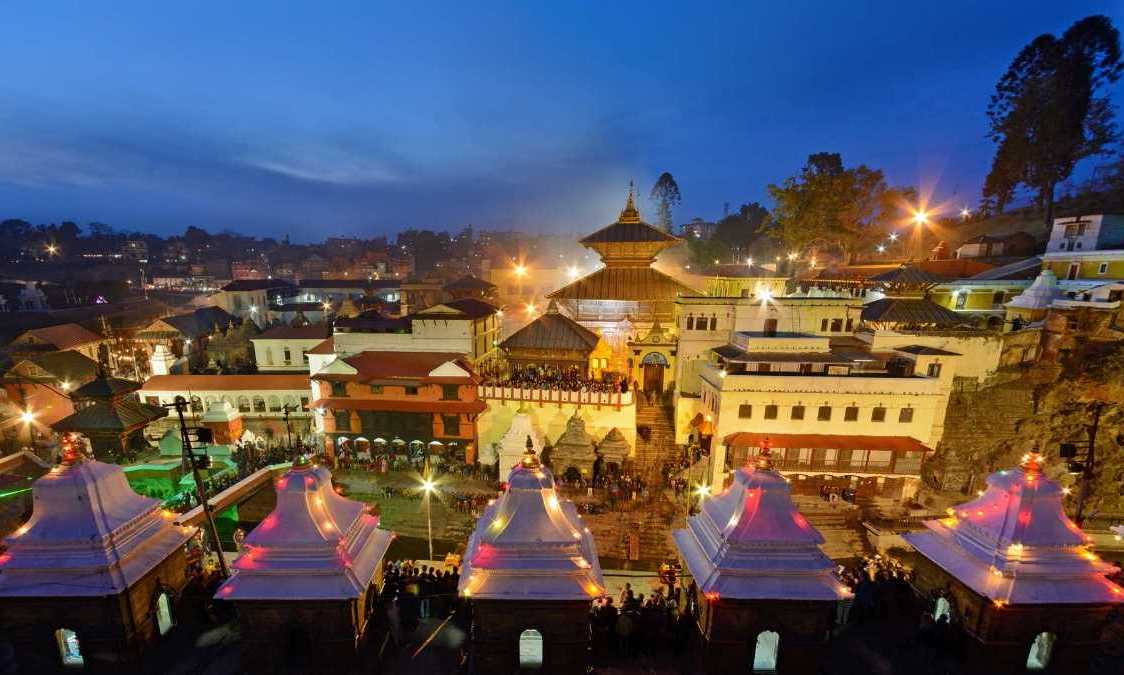
Originally constructed in the fifth century, the Pashupatinath Temple was later rebuilt by the Malla monarchs. The magnificently etched stone replicas that were visible here still have their unique quality. It has temples in a variety of architectural designs, such as pagodas, domes, and Srikhara kinds. The shrine is home to a variety of temples, including those for Bhuwaneshwori, Dakshinamurti, Panchdewal, Tamreshwor, and others. Numerous activities are held at the temple around the festival of Shivaratri when thousands of people visit Pashupatinath to commemorate the biggest Shiva celebration and to seek Lord Shiva's blessing.
Bouddhanath Stupa
The stupas of Nepal are possibly the most well-known and spectacular stupas in the entire world. The Boudhanath stupa is regarded as one of the most sacred Buddhist pilgrimage locations among these stupas. One of the biggest stupas in South Asia, the building is 36 meters high. It is 8 kilometers from Kathmandu and can be seen directly from Tribhuvan International Airport. It is thought to have been built in the 14th century, not long after Buddha went away. The stupa is one of the biggest spherical stupas in Nepal thanks to its enormous mandala.
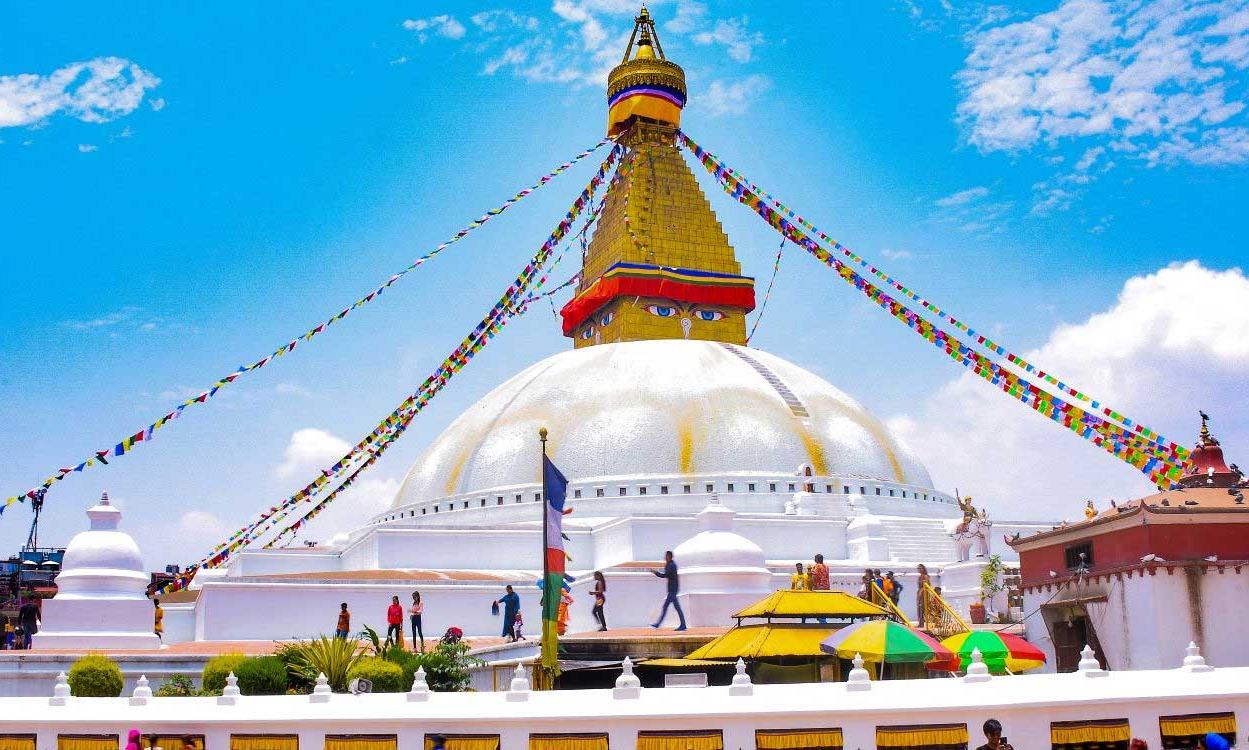
An amazing white arch with a gold tower covering rises strongly into Nepal's spectacular skies on the city's northeastern outskirts. Because it is the largest stupa in Nepal and a UNESCO World Heritage Site, a tremendous number of tourists and onlookers are constantly swarming around it. Boudhanath is not the place to search for comfort if getting away from everything is truly vital, but despite the groups, the site is infused with an unusual, evident harmony.
Swayambhunath Temple (Monkey Temple)
The Swayambhunath Temple( Monkey Temple), which is west of Kathmandu city and is perched on a hill, includes a spectacular domed stupa as well as a number of shrines and temples that date back to the 5th century. Each temple is incredibly elaborate and lavishly decked with gold and colorful prayer flags. It is one of the holiest Buddhist sites in the city.

Numerous monkeys living in this important pilgrimage spot are likewise revered by Tibetan Buddhists and Hindus as being holy. The bodhisattva of knowledge Manjushree, it is said, was raising the temple hill when the lice in his hair changed into these monkeys. The name Swayambhunath, which means "self-arisen," comes from this myth.
Budhanilkantha Temple
According to Hindu mythology, the magnificent god Vishnu creates the universe while perched atop a snake's protective curls and drifting across the vastness of joy. A short distance from Kathmandu's center, the Budhanilkantha Temple is illuminated by this iconography. An enormous, 5-meter-tall basalt carving of the god leaning back on a snake dominates the complex's gilded lake. It is embellished with marigolds that devotees venerate, and the incredible itself is encircled by fortunate rudraksha trees.
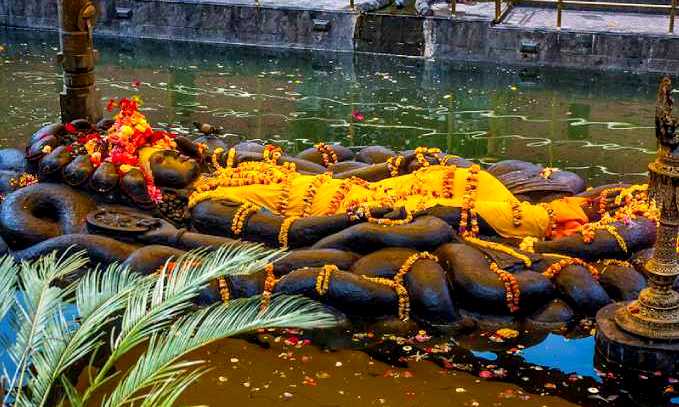
Changunarayan Temple
The Changu Narayan Temple, with establishments dating all the way back to the fourth century, this Hindu temple in Bhaktapur, east of Kathmandu, is thought to be the oldest in Nepal. Fortunately, all of the precisely cut sculptures, jewel box altars, and lasting red-block architecture were largely unharmed by the terrible earthquake that struck in 2015.
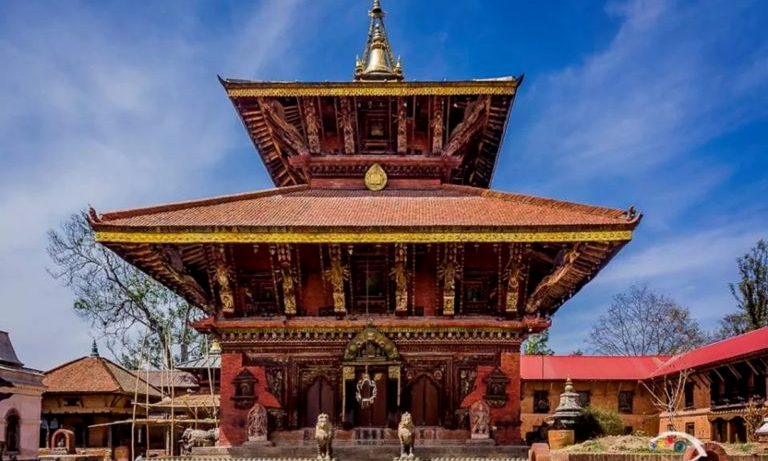
A few cracks that Changu Narayan created are currently being lovingly repaired with funding from the careless section expense.
Dakshinkali Temple
Only a kilometer separates the settlement of Pharping from the Dakshinkali Temple, which is 22 kilometers from Kathmandu. One of Nepal's most revered temples, the sanctuary is dedicated to the fierce and dreaded Goddess Kali. The traditions and ceremonies of this temple are what make it famous. In particular, uncastrated male goats and cockerels are sacrificed there twice a week as a gift to the vicious spouse of Lord Shiva. This holiest temple was built in 1855 by an adherent of Kali named Rani Rashmoni.
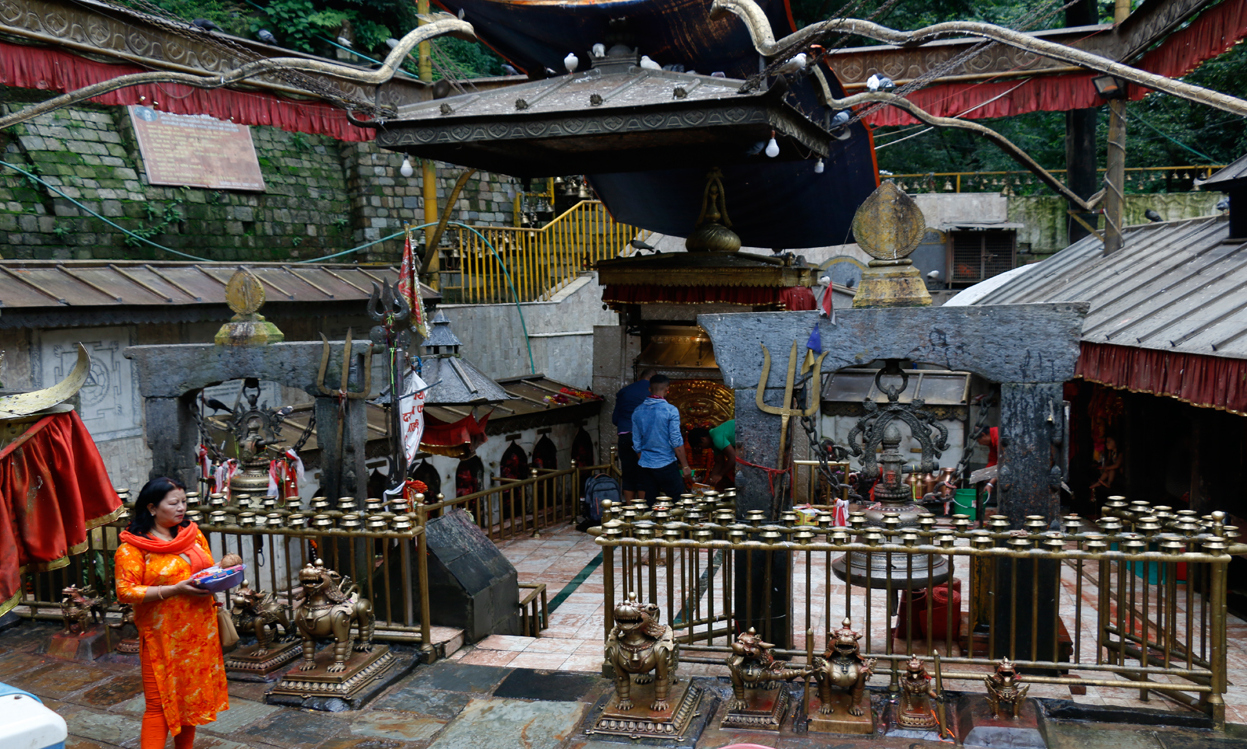
The words "Dakshin," which means "south," and "Kali," which represents the goddess who is worshiped here, are combined to form the name of the Dakshinkali Temple. The Goddess's statue, which symbolizes the victory of good over evil and the victory of positivity over negativity, is pictured standing on top of a corpse. The four-armed idol depicts an image of a powerful heavenly figure who has come to defeat evil and emerge victorious, embellished with a sword in one hand, a skull cap in another, and a severed head in the third.
Pokhara
One of the most well-known tourist destinations in Nepal is Pokhara. It is renowned for its quiet atmosphere and stunning splendor. Pokhara, one of the country's major cities, is adjacent to Kathmandu, the capital, and is renowned for its strong social roots. The city has everything from mountain ranges to lakes, markets, and religious spots, making it the perfect location for gatherings of all ages. The sanctuaries are the finest resource for those who need to understand the urban community culture immediately and be somewhat familiar with its range of experiences.
Here is the list of the most well-known pilgrimage sites in Pokhara that one should visit:
Peace Temple
The Shanti Stupa, or World Peace Pagoda, is located atop the Ananda slope; accessing the sanctuary requires some light hiking. The sanctuary was built in the conventional Buddhist pagoda style and is beautifully white painted. The sanctuary offers a comprehensive view of Phewa Lake, Pokhara City, and the Annapurna Mountain Ranges.
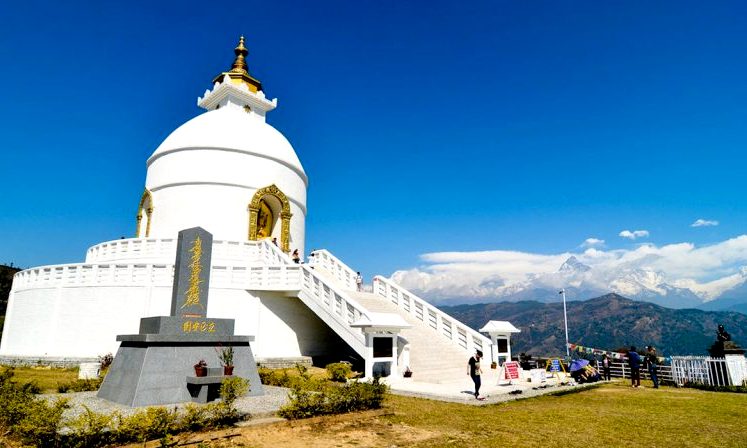
The Shanti Stupa was built shortly after the Second Great War to inspire peace among all ethnicities and religious beliefs.
Barahi temple
The Tal Varahi or Tal Barahi temple, also known as the lake temple, is located in the Kaski area. This temple, which is dedicated to the goddess Durga, is isolated on a tiny island in a section of Phewa Lake. While there are several legends about the sanctuary, the most well-known one among people is that Lord Kulmandan Shah, the first monarch of Kaski, had a dream in which the goddess asked him to build the sanctuary over the lake. He built the sanctuary after following the instructions.
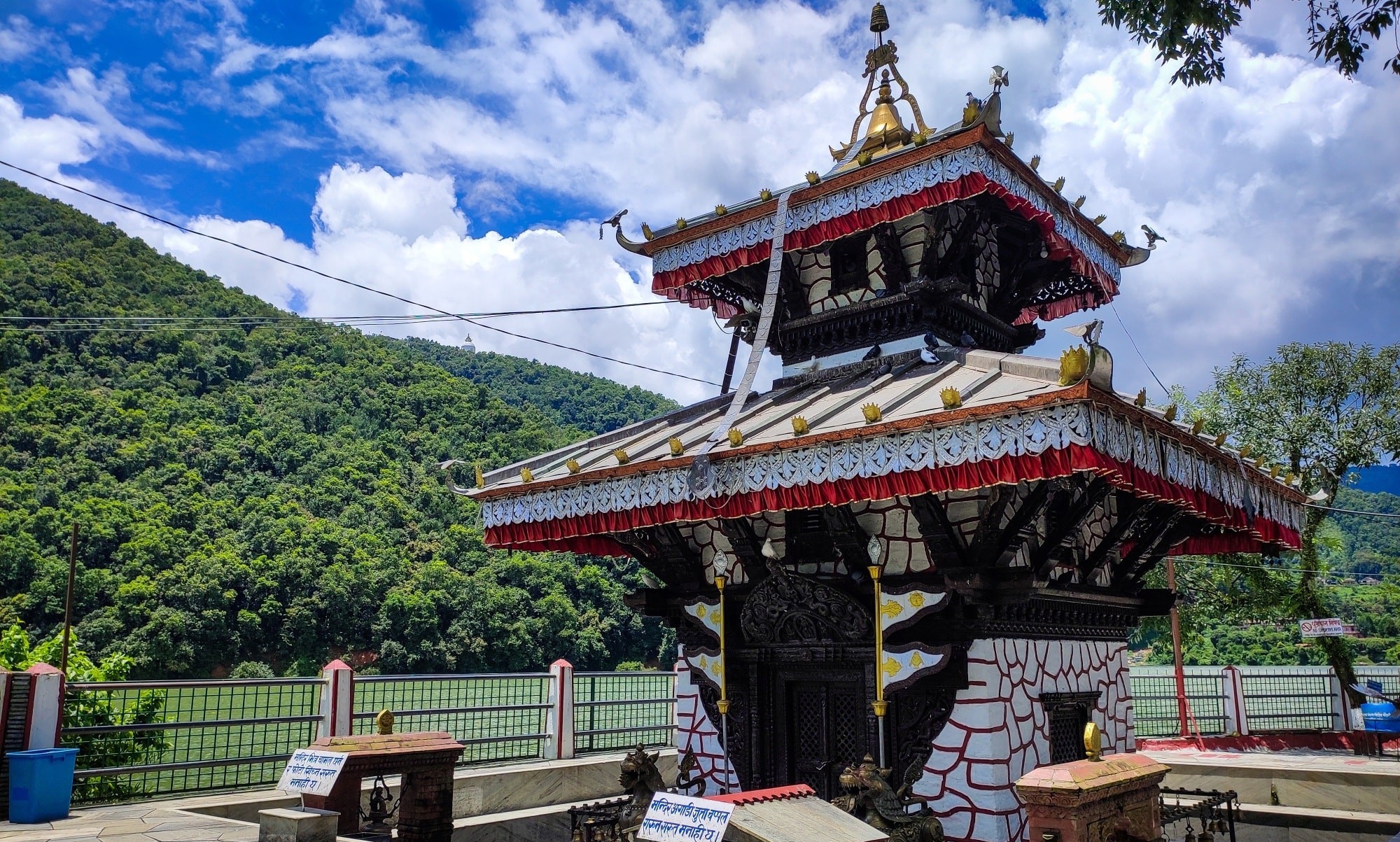
Vindhyavasini Temple
The shrine, which has an icon of the goddess Bhagavati, is thought to be the oldest sanctuary in Nepal. The sanctuary, which is situated on a slight elevation, offers a breathtaking vantage point of the Himalayas. The deity may have been purchased by King Siddhi Narayan Shah before the country's union, according to widespread rumors.
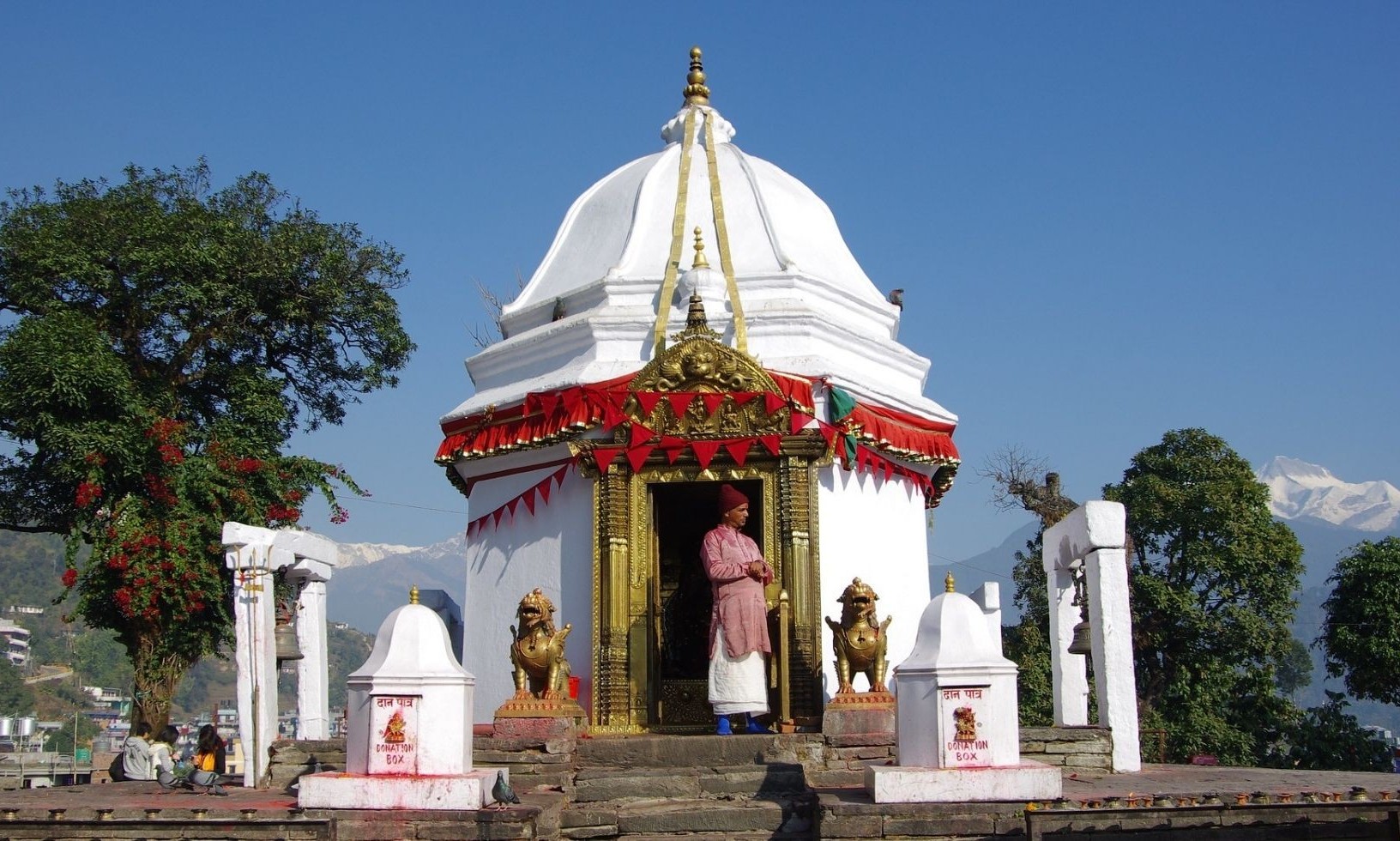
Additionally, the sanctuary is well-known for the Hindu wedding ceremonies that take place there.
Chitwan
In Chitwan, there are a variety of pilgrimage sites, mostly for Buddhists and Hindus. Incredibly well-known rivers and parks can be found on the banks of the River in Chitwan. Harihar Mandir and Shiva Mandir are located on the bank of Narayani Mandir, Bikram Baba is located on the bank of the Rapti River, and Devghat, which is in Chitwan, is located on the bank of the Gandaki River.
Devghat Dham
Goddess Sita's cave is one of the several temples and tunnels in Devghat dedicated to Hindu deities, goddesses, and sacred figures. Every year, huge melas (social gatherings) are held to celebrate Makar Sankranti, making it one of the greatest religious melas in Nepal. Hindu pilgrims can wash at the Krishna Gandaki waterway's crossing, which is known for its intriguing "Saligram Sheela" (holy stone), which devotees of Hinduism revere as Lord Vishnu. Here is where the two massive rivers Kaligandaki and Trishuli merge.
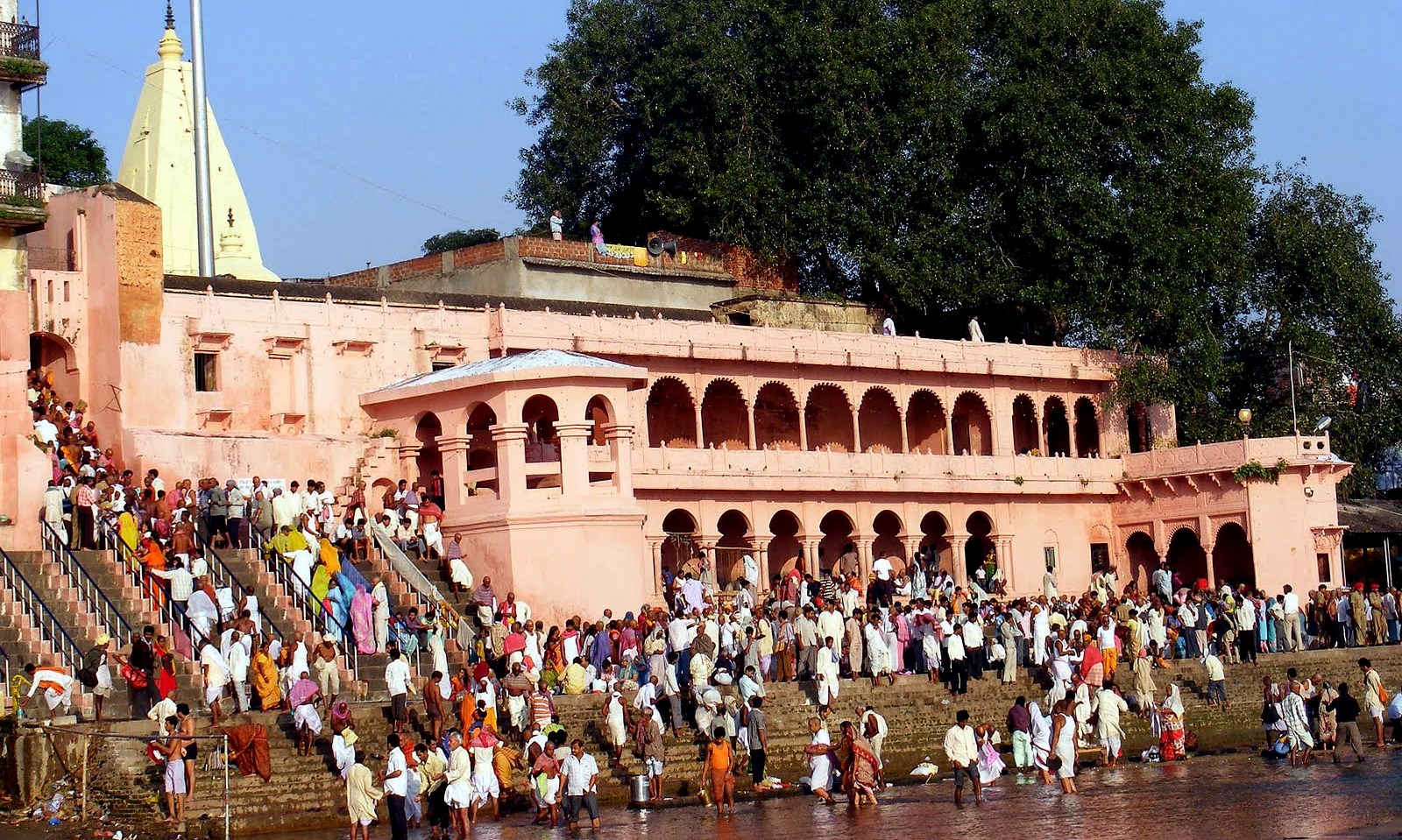
Devghat Beni is the name of the place where these two major rivers converge.
Bikram Baba
Bikram Baba, a holy place for Hindus, is named after a Hindu deity well-known to the Tharu locals. While it is open, it is a very well-known location for a sizable number of people. The place of worship is a tree-based wooded environment. Long ago, a resident noticed a stone at the tree's base that, in his opinion, resembled Bikram Baba. It is thought that if people worship with a sincere heart, their wishes will be granted.
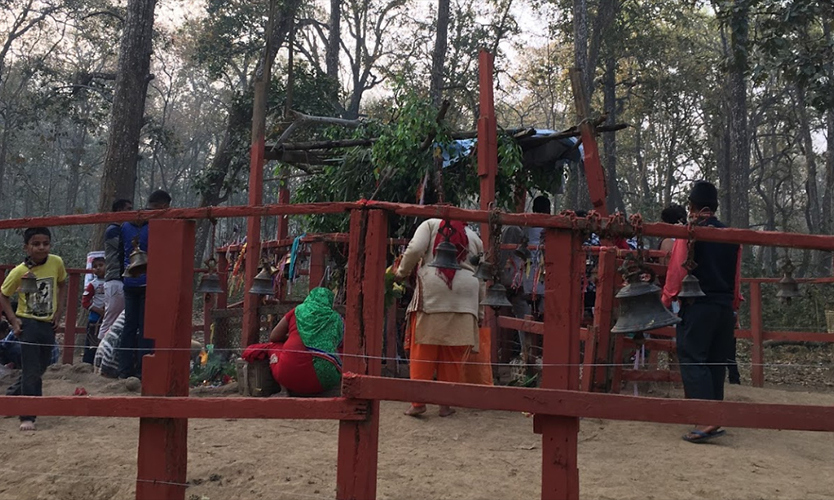
Maulakalika Mandir
It is gaining renown as a mystical Centerx and a blessed location for gratifying the desires expressed by enthusiasts and fans before the Goddess. It is set up on a peak in the middle of a dense green forest. Each visitor who visits the sanctuary is enchanted by the snow-covered great excellence in the north, the heavenly site Devghat, Chitwan National Park, Sauraha, Tigers Top, and other attractive typical grandeur visible toward the north from the sanctuary.

People are also motivated to return to the sanctuary by the preservation of the Harmony Woodlands Park (Banbatika), the aesthetic slate-paved pathway, stands, tap stands, stations, and various temples that are located en route to Maulakali.
Manakamana Temple
The Manakamana sanctuary, located in the Gorkha area of Nepal 100 kilometers to the west of Kathmandu, is the dedicated location of the Hindu goddess Bhagwati, a manifestation of Parvati. Mana, which means heart, and katana, which means a meaningful wish, are the first two words in the name Manakamana. It is widely believed that Goddess Manakamana grants the wishes of every person who travels to her sacred location to worship her.

As a result, the name of the temple's goddess is "wish-fulfilling goddess." She has been revered since the seventeenth century.
Muktinath Temple
Muktinath Temple is one of the holiest shrines in Nepal. Both Buddhists and Hindus appreciate the Muktinath Pilgrimage Tour. It is situated at an elevation of roughly 3749 m, 48 kilometers higher east of Jomsom. A pagoda-shaped sanctuary honoring Lord Vishnu serves as the temple's primary sanctuary. There are 108 projected waterspouts that resemble cow heads and are pouring holy water behind the sanctuary.
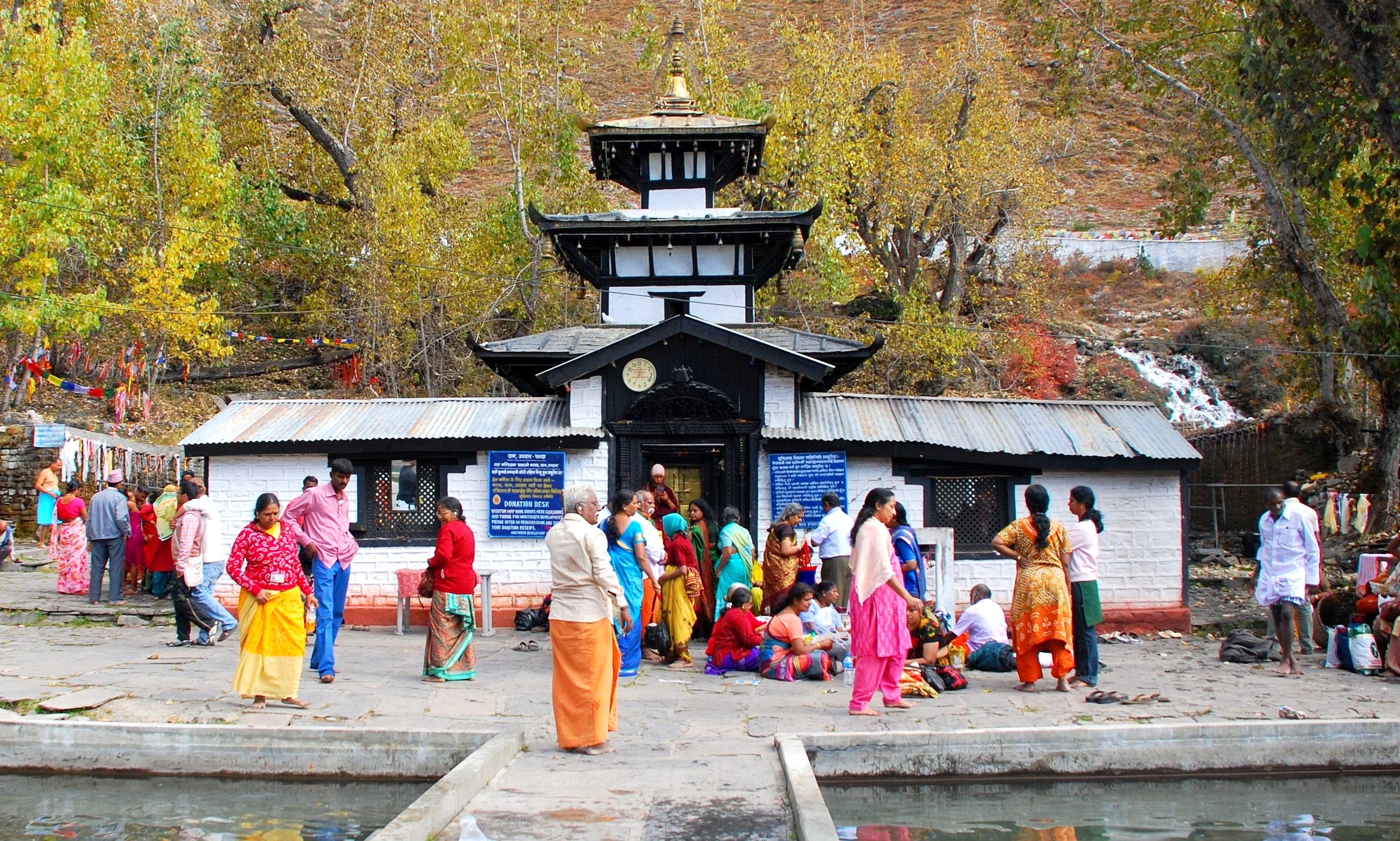
Lots of travelers clean up here in this holy, icy water. On a tall mountain range, the sanctuary is built. Hindu devotees congregate here to honor Master Muktinath on the holiday of Janai Purnima. A further well-known shrine to the goddess of fire, Jwaladevi, is situated about 100 meters south of Muktinath.
Note: Travelers can visit some of the Pilgrimage sites by Helicopter ride. It will be very adventurous to reach somewhere by heli and we offer a lot of amazing heli packages for our guests.
If you need any further information, please contact us by email: [email protected], Phone: +977- 985 100 5129 (WhatsApp)
#Tags
Tripadvisor
5.0928 reviewsGoogle
4.8114 reviewsFacebook
4.1 recommend44 ReviewsTrustpilot
4.1 Great(5 reviews)- Trusted by50K plus traveller




